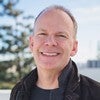Premium workshop
You can view a 2 minute preview. For details, scroll down below the video.
Description
Objectives
- Learn about world view transformation and how it is a profound shift in consciousness resulting in long lasting changes in the way we experience and relate to our self, others, and the world.
- Understand the barriers to integrating experiences and transforming our realities.
- Learn the steps for cultivating positive transformation and nurturing a world view awareness.
Presented at the 2013 Polestar Life Conference, this workshop invites each of us to embrace the gifts of healing for ourselves, our relationships, and our world.
About This Video
Comments
Thank you,
Rich Holcomb
You need to be a subscriber to post a comment.
Please Log In or Create an Account to start your free trial.







